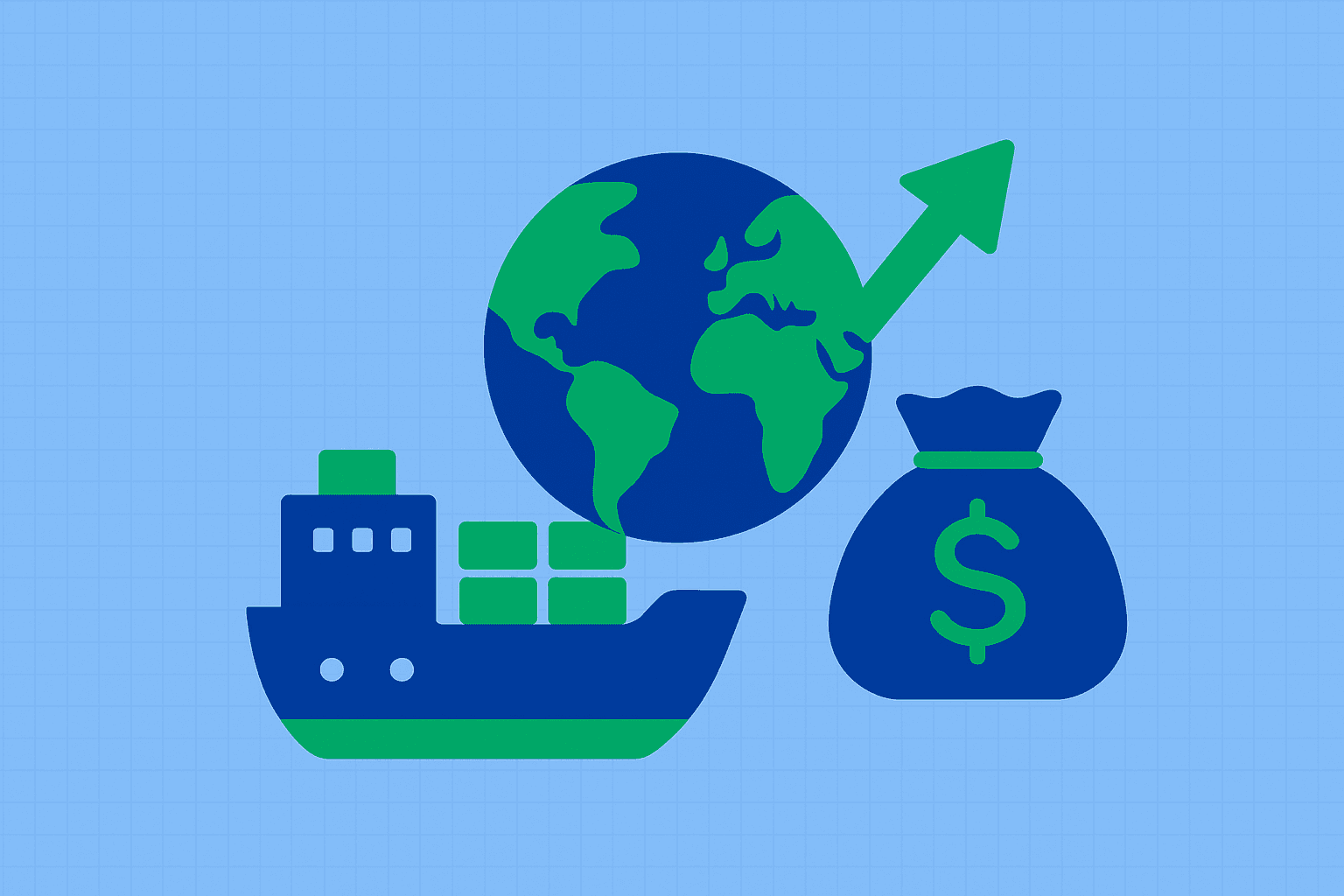Standardisation vs Customisation: What’s Better for Your IT Service Business?
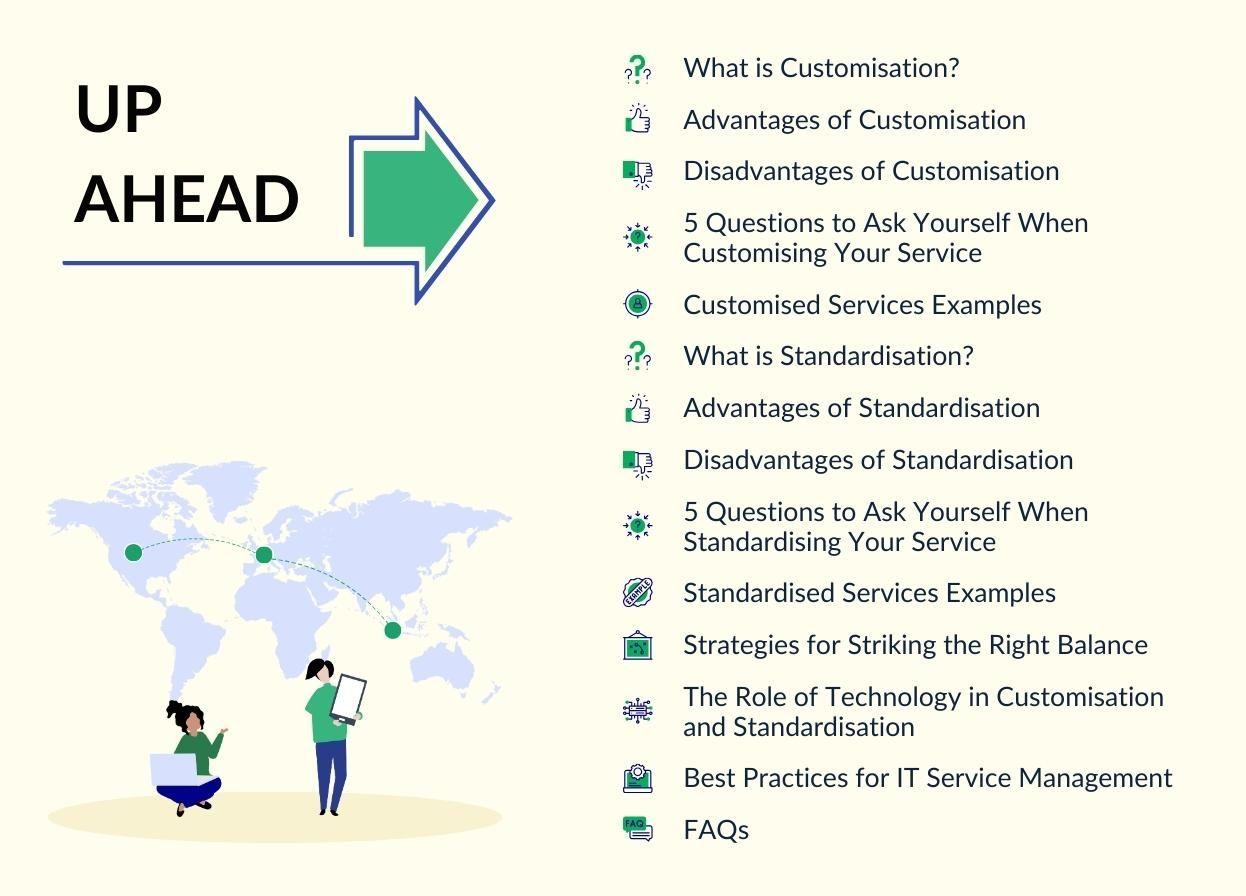

Imagine craving a perfect cup of chai on your way home from work. Now, picture being able to customise that cup to your liking, even before reaching the cafe. Whether you prefer a flavoured blend or a classic, plain cup, you want it just as you make it home.
Chaayos, the chai-café chain, has mastered this art of personalisation. With over 80,000 ways to customise, each chai is a handcrafted masterpiece made to order. This level of customisation has satisfied individual taste preferences and propelled Chaayos to success, demonstrating the power of personalised experiences in boosting business.
Like choosing your favourite custom chai, you must consider the best way to provide your IT services. Customisation offers quality but can be time-consuming, while standardisation is quicker but may not fit well.
Consider factors like client volume, service demands, and available resources to decide what suits your company best. Customisation and standardisation each have pros and cons. Read on to learn more about standardisation vs customisation.
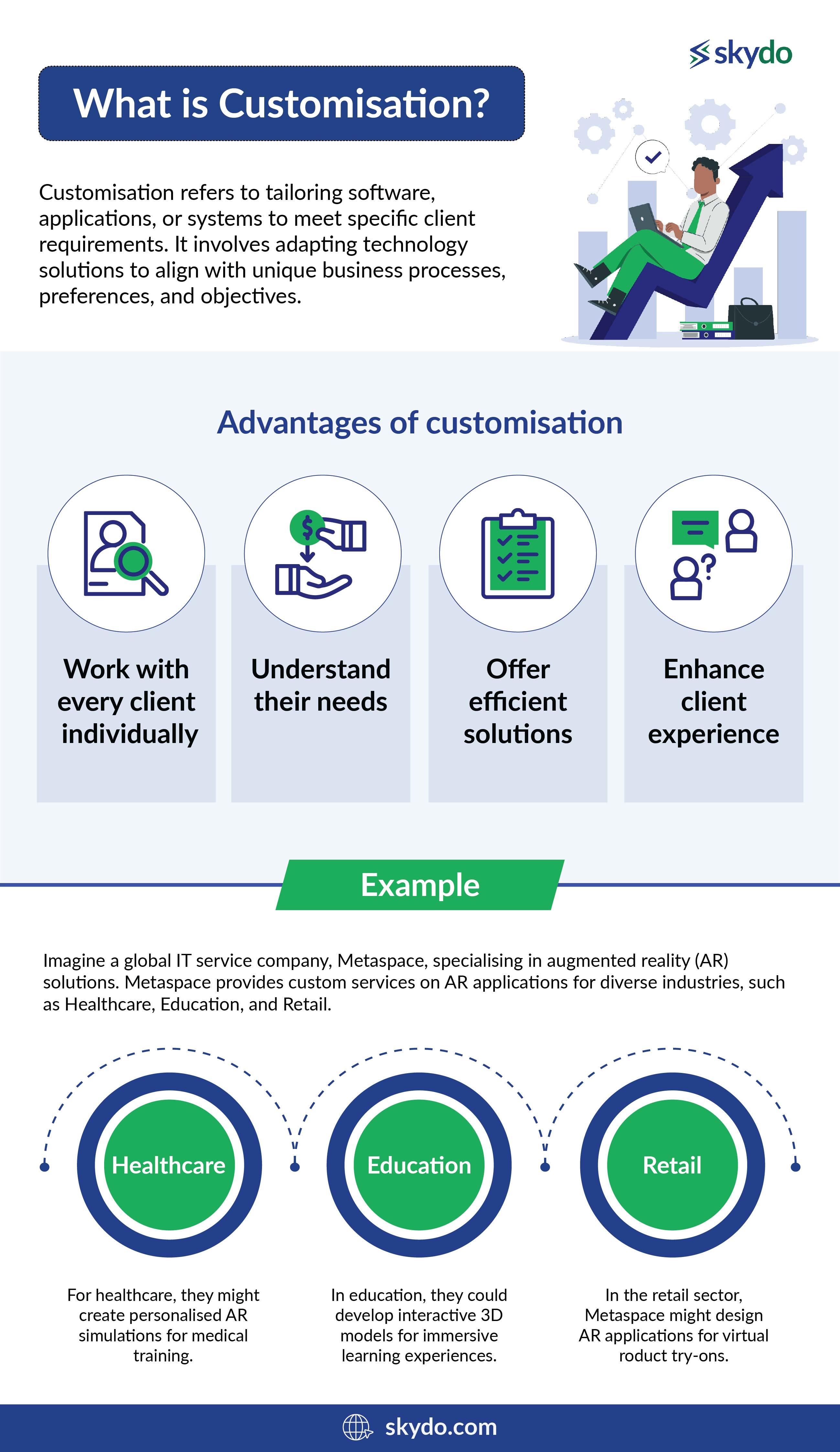
Customisation refers to tailoring software, applications, or systems to meet specific client requirements. It involves adapting technology solutions to align with unique business processes, preferences, and objectives. This personalised approach enhances functionality, user experience, and overall system efficiency.
Moreover, customisation enables businesses to address distinct challenges, ensuring seamless integration with existing infrastructure while maximising the value of IT investments. It fosters a client-centric paradigm, promoting adaptability and innovation.
In the dynamic landscape of global IT services, customisation is pivotal in delivering bespoke solutions that cater to diverse industry needs and foster long-term client satisfaction.
Advantages of Customisation
Customisation, if done right, can work wonders for your business. You can work with every client individually, understand their needs and concerns, and offer solutions accordingly.
For instance, a company as large as IBM also provides customisation options for their clients. Their Extensibility Workbench has been developed specifically to cater to business-specific needs, where adjustments related to functionality and UI can be made to existing applications.
This way, not only is the client’s experience better, but it also ensures that your solutions are efficient. Successful customisation can become a great marketing tool through word of mouth and referrals.
Disadvantages of Customisation
Customisation can be challenging to keep up with, especially if your company’s operations are large-scale. It demands a lot of time compared to standardised solutions and affects your costs too.
For example, if building standard software costs $50,000 to build, customised software’s costs can range from $75,000 to $350,000.
That’s quite a jump.
It can also get tedious and slow down your operations, which means you have to limit the number of clients you are working with.
Another disadvantage with customisation comes during the planning and implementation stage. You need to look at every problem and come up with solutions from scratch, which can lead to slower delivery.
Your work becomes complex with new and unexpected roadblocks, which can be rather frustrating. Furthermore, for every solution you come up with, you must ensure it is compatible with the client’s current system and can be integrated into their operations easily.
5 Questions to Ask Yourself When Customising Your Service
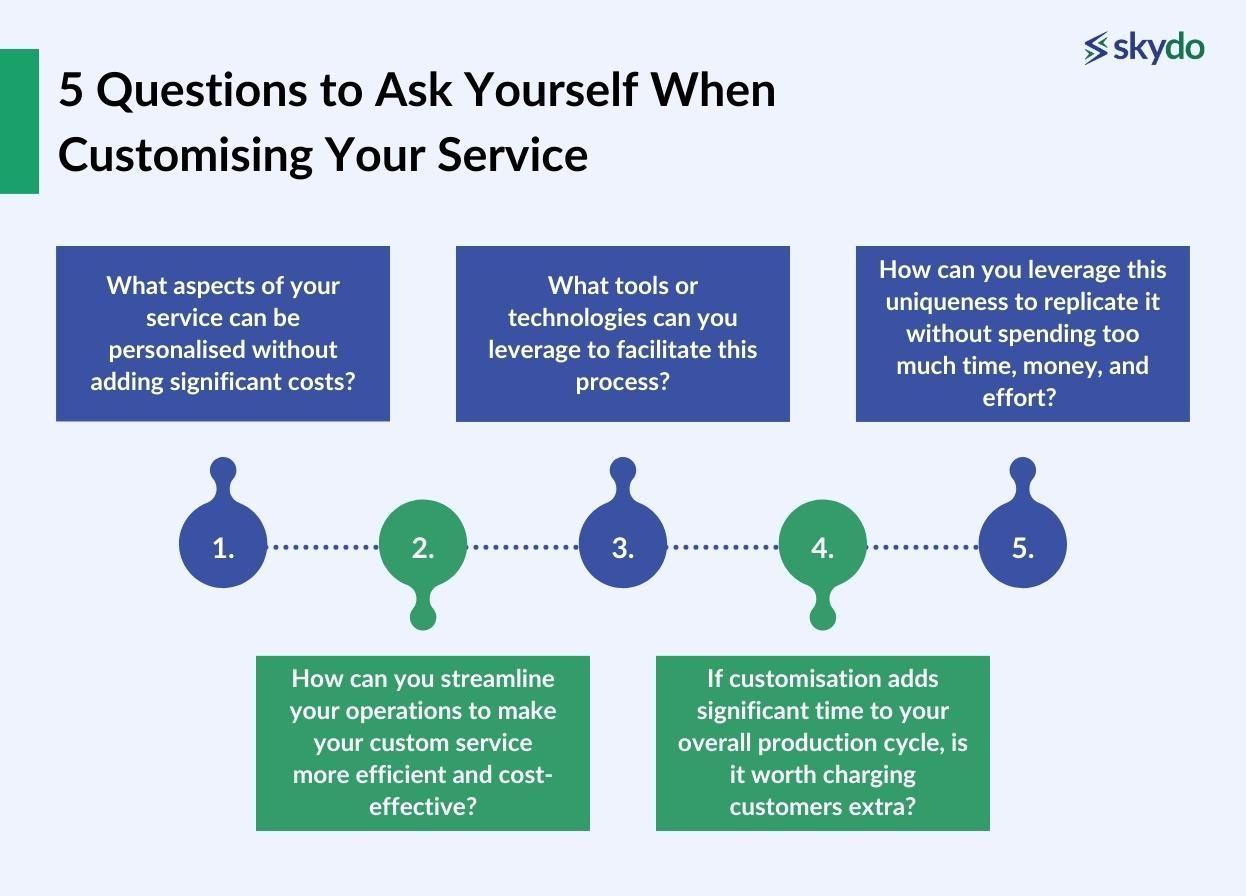
Personalising your service without increasing the final price is essential for any successful business. To accomplish a favourable customisation strategy, consider the following five key questions.
- What aspects of your service can be personalised without adding significant costs?
- How can you streamline your operations to make your custom service more efficient and cost-effective?
- What tools or technologies can you leverage to facilitate this process?
- If customisation adds significant time to your overall production cycle, is it worth charging customers extra?
- How can you leverage this uniqueness to replicate it without spending too much time, money, and effort?
Customised Services Examples
Imagine a global IT service company, Metaspace, specialising in augmented reality (AR) solutions. Metaspace provides custom services on AR applications for diverse industries, such as healthcare, education, and retail.
For healthcare, they might create personalised AR simulations for medical training. In education, they could develop interactive 3D models for immersive learning experiences. In the retail sector, Metaspace might design AR applications for virtual product try-ons.
This example illustrates how Metaspace's tailored 3D software services address specific industry needs, showcasing their expertise in delivering customised solutions within the broader IT services landscape.
What is Standardisation?

Standardisation refers to establishing and adhering to uniform practices, protocols, and specifications across various operations and services. Defining technology, processes, and communication guidelines ensures consistency, interoperability, and efficiency. Standardisation further helps achieve operational excellence, cost savings, and higher customer satisfaction.
It enhances collaboration among diverse teams, reduces complexity, and facilitates seamless integration of services on a global scale. This practice fosters a unified approach to IT service delivery, promoting reliability and compatibility while streamlining workflows.
Advantages of Standardisation
With standardisation, you can churn out faster results and serve as many clients as you want. You can delegate simple solutions to freshers and complex issues to relatively experienced staff.
By doing more work in a short amount of time, you can increase your cost efficiency and profits, too. It is also easier to manage the operations of a business that is more into standardised solutions, and the one-size-fits-all model can suit a majority of your work.
For instance, if you have clients offering cyber security services from the same country, chances are that they are adhering to the same set of regulations laid down by the government. In this case, the software you develop for them can have some standardisation, saving a lot of time. It also fast-tracks the process for future clients with similar needs.
Disadvantages of Standardisation
With standardisation, you risk becoming part of a herd. The solutions you offer might not be very different from the ones offered by your competitors. There is little room to be innovative or flexible, which can restrict the type of clients that come your way.
Additionally, it puts you in a box where you become known for serving only a narrow set of problems. It also leads to the risk of losing clients to competitors who are into customisation. Many clients are willing to shed some extra cash if it means they will get tailored and specific solutions.
5 Questions to Ask Yourself When Standardising Your Service
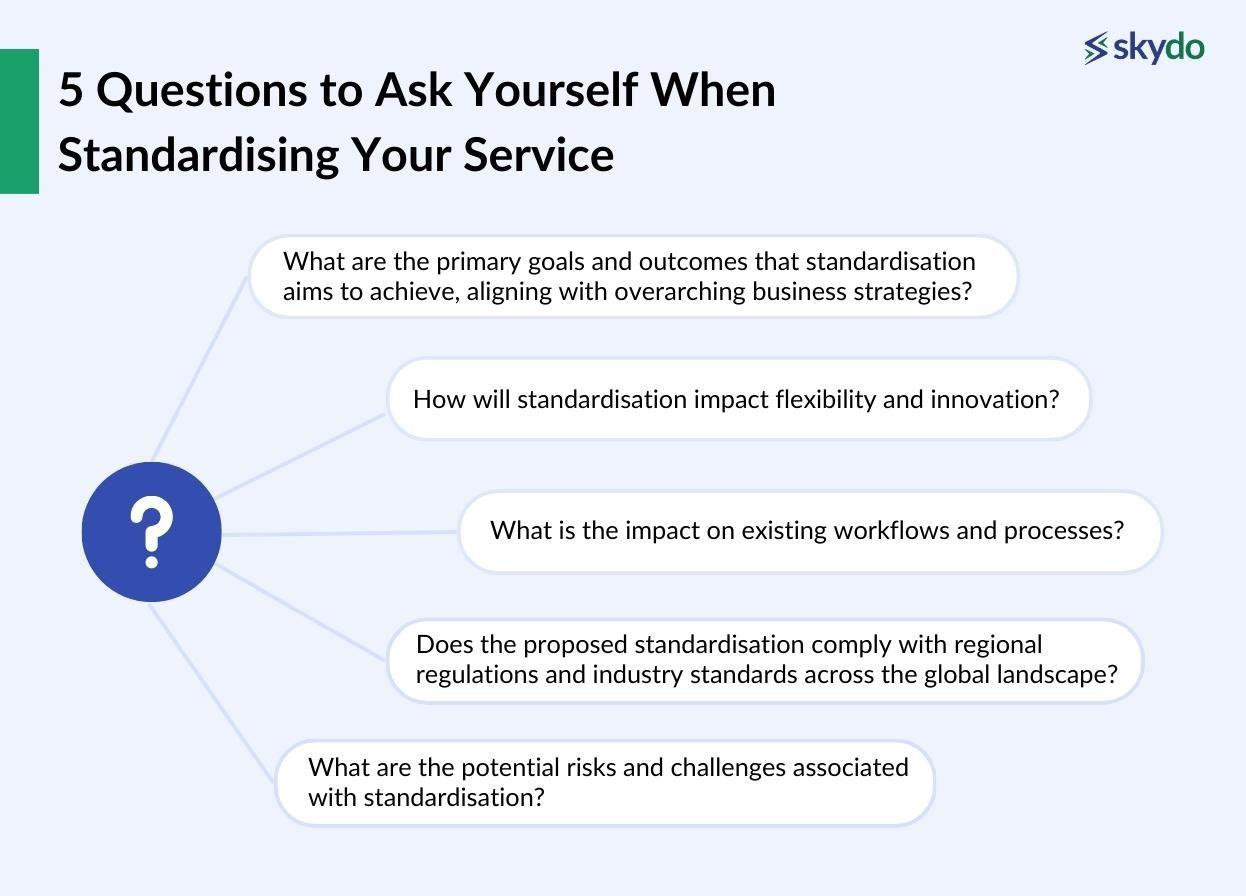
Here are some key questions for standardising your IT service business.
- What are the primary goals and outcomes that standardisation aims to achieve, aligning with overarching business strategies?
- How will standardisation impact flexibility and innovation?
- What is the impact on existing workflows and processes?
- Does the proposed standardisation comply with regional regulations and industry standards across the global landscape?
- What are the potential risks and challenges associated with standardisation?
Standardised Services Examples
Let's consider a hypothetical company called "TechVista Solutions" that provides standardised IT services globally. TechVista could offer a standardised package of cybersecurity services, including firewall management, intrusion detection, and vulnerability assessments.
With this standardisation business approach, TechVista ensures consistent security for its clients across different regions. This standardisation allows businesses around the world to benefit from a uniform and robust cybersecurity framework, reducing the risk of cyber threats and ensuring a reliable defence strategy.
Clients of TechVista can thus rely on a standardised set of services to safeguard their digital assets, regardless of their geographical location.
Strategies for Striking the Right Balance
It is possible to derive the advantages of standardisation and customisation using a hybrid model. Irrespective of your company’s scale, you can adopt both methods operationally. The synergy of standardisation vs customisation proves valuable in optimising operations at any scale.
First, assess your client pool and determine which of the two options they might prefer. If a client is into cutting costs and saving time, standardisation is probably the right option for them. On the other hand, if a client demands creative solutions and doesn’t mind paying for them, customisation might be ideal.
Depending on your client base, you can direct resources proportionately towards customisation and standardisation.
For example, with a hybrid model, you can give your clients customised chatbots that have proven to increase revenue and can standardise the website design. A website template you can work with is necessary, not just a similar-looking website for all clients.
The fact of the matter is that irrespective of the level of standardisation, your work will shine best when it is customised. Even if it involves working with set templates, a tinge of customisation makes your work stand out and is a fool-proof way of leaving an impression.
However, divide your resources efficiently to ensure that the model you have adapted is scalable and that your workflow is steady. If your needs change and you need to redirect resources to either model, it should be a smooth transition.
You can achieve this by ensuring all employees are familiar with both methods of working and can adapt to them easily. Educate them and help them develop the skills to innovate or produce quick solutions and results when needed.
You can identify the client’s needs and provide suggestions for them regarding which route is best suited for them. Some research into their competitors can help you with these insights.
The Role of Technology in Customisation and Standardisation
In standardisation, technology enables the automation of processes and procedures. For instance, software automation minimises errors, saves time, and ensures consistency in tasks, contributing to heightened customer satisfaction and cost reduction. Additionally, technology facilitates standardised communication, fostering seamless collaboration within teams.
Conversely, in customisation, technology empowers companies to tailor services to individual preferences. Data analytics, for example, enables personalised marketing efforts, enhancing customer engagement and loyalty. Furthermore, technology enables unique, personalised services, such as virtual reality tours or tailored product recommendations.
But in the realm of standardisation vs customisation, striking a balance between these two approaches is crucial, and technology aids in this by providing insights through data analytics and informing decision-making processes.
An example of successful balance is Starbucks, which harmonises standardised coffee-making processes with a diverse range of customised offerings, exemplifying the symbiotic relationship between technology, customisation, and standardisation.
Best Practices for IT Service Management
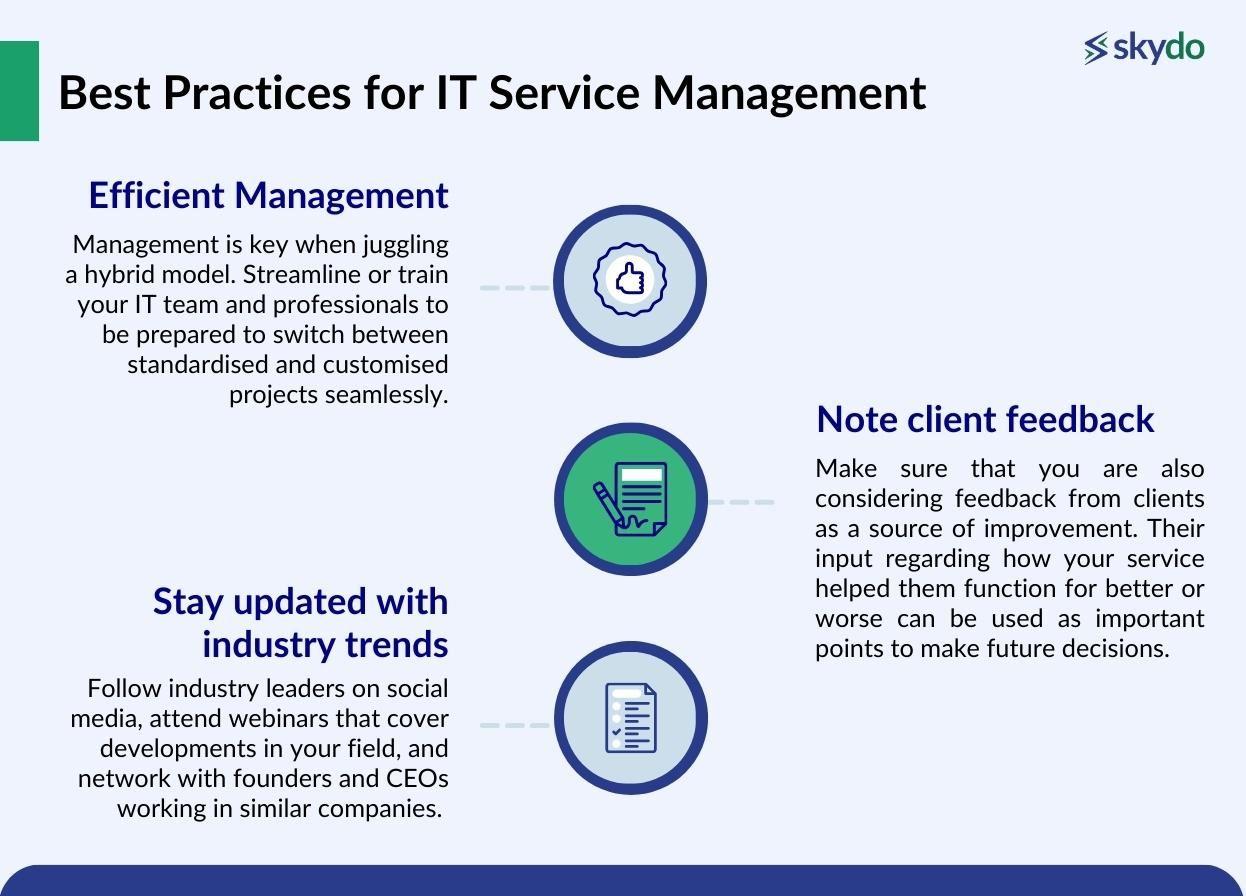
1. Efficient Management
Management is key when juggling a hybrid model. Streamline or train your IT team and professionals to be prepared to switch between standardised and customised projects seamlessly.
Constant meetings where you review your strategies and take inputs from your team about best practices and challenges can be helpful.
2. Note client feedback
Make sure that you are also considering feedback from clients as a source of improvement. Their input regarding how your service helped them function for better or worse can be used as important points to make future decisions.
It will also help you recognise whether you are better at personalisation or standardisation. Taking a cue from this feedback, you can shape future strategies regarding hiring, time management, and even developing future solutions.
3. Stay updated with industry trends
Follow industry leaders on social media, attend webinars that cover developments in your field, and network with founders and CEOs working in similar companies.
These efforts will help you keep your operations up to date and ensure you are not falling through the cracks and being left behind because of outdated methods and technology.
Conclusion
The IT services landscape mirrors the dynamics of custom fashion, encapsulating the contradiction of standardisation vs customisation. One day, clients prefer something ordinary that just gets their job done quickly and for cheap, and on other days, they want the special treatment where you come up with something completely new.
How you understand these needs and deliver on them will dictate the success of your business and your relationship with your clients.
Frequently Asked Questions
Q1. What's the difference between "Customised Services" and "Standardised Services"?
Ans: Customised services are tailored to individual preferences, offering unique solutions. Standardised services follow uniform processes, ensuring consistency and efficiency across a broader audience.
Q2. Which is better for consumers: a customised service or a standardised service?
Ans: The preference varies; some favour tailored experiences (customisation service), while others appreciate the reliability and consistency of standardised services.
Q3. Why is standardisation important in services?
Ans: Standardisation business or services ensure uniformity, reduce errors and enhance efficiency, which is crucial for scalability, risk reduction, and operational consistency.
Q4. Why is customisation important in services?
Ans: Customisation services cater to individual needs, fostering customer satisfaction, loyalty, and a personalised experience, setting businesses apart in competitive markets.
Q5. What is standardisation in information technology?
Ans: In information technology, standardisation involves establishing uniform processes, protocols, and specifications to ensure consistency, interoperability, and efficient operations.
Q6. What are the 5 principles of the process of standardisation?
Ans: The five principles of standardisation include-
- Defining clear objectives
- Ensuring industry compliance
- Considering scalability
- Managing user experience
- Leveraging technology judiciously for a balanced approach







